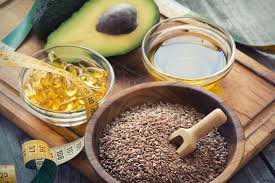Previously, I asked whether ‘light’ from living plants and animals, in the form of scientifically measurable biophotons, holds the key to understanding how the much-talked-of ‘life force’ in raw foods can improve our health and vitality. Today I’m looking at another intriguing feature of foods that is linked to light — the ability of fats and oils to transmit light.
The process by which plants convert light energy into fuel by photosynthesis is well understood — as is the process by which we harness the Sun’s rays to synthesise Vitamin D. Yet other roles played by light in our body remain on the fringes of science. In the same way that pulses of light sent through optic fibres allow us to send information via the Internet, it seems that light may have a crucial function in communication between cells and with our environment. What is more, the types of fats and oil that we eat may determine how well this communication occurs.

One of the pioneering researchers in this field of work was German biochemist Dr. Johanna Budwig, who like me, developed a fetish for fats and oils. Seven times Nobel Prize nominee, Budwig healed terminal cancer patients with her oil-rich diet programmes — which she designed after years of studying blood samples from sick and healthy individuals. Budwig discovered the link between Omega-3 fatty acid levels and health and eventually came to the conclusion that the vast majority of chronic illnesses today are caused by inappropriate mass processing of foods. In particular, it seems that heating oil destroys its ability to create a strong cloud of electrons around our cells and ultimately our ability to effectively use light as a means of communication.
What the fat?
This might all sound a bit far-fetched, so to understand things better we need to consider a few physics and chemistry facts.
• The relationship between fats/oils and electrons — every type of fats or oil has its own unique structure. Saturated fats have no electron-rich double bonds. Monounsaturated fats have one electron-rich double bond. Polyunsaturated fats have more than one electron-rich double bond. These differences change the behaviour of fats and oils when they’ve slotted into our cell membranes and ultimately affect the overall charge and electron cloud that surrounds our cells.
• Relationship between electrons and light — electrons can absorb and release energy as photons (units of light). It’s a kind of exchange or transaction. Therefore, a cell with enough electron-rich fats in its membrane can form a cloud of electrons that will allow a constant flux of photons to be emitted and re-absorbed.
• Cells use light for communication — many nifty experiments with cells separated by glass or quartz have proven that photons are fundamental information carriers for living beings.
So, we can begin to see how the oils and fats we eat will affect the quality of cellular communication in our body. The question then becomes — how do we make sure that we get the correct types and balance of oils? Above all, it’s important to shop for cold-pressed oils that are protected from heat and oxidation.
My recent interview with author and founder of the College of Natural Nutrition, Barbara Wren, helped shed some more light on this subject (pardon the pun). She explained the need to match the right type of oil to the climate you live in. Like Budwig, Wren places oils at the centre of her guidelines for finding health, happiness and freedom.
So go on, treat yourself to another lip-smacking, raw oily treat and feel safe in the knowledge that your body will be thanking you for it.
Dr Ian Tennant
xx
The post Omega 3 — Indulge in this fat fetish! appeared first on Superfood blog - Healthy, Rawfood Lifestyle.

